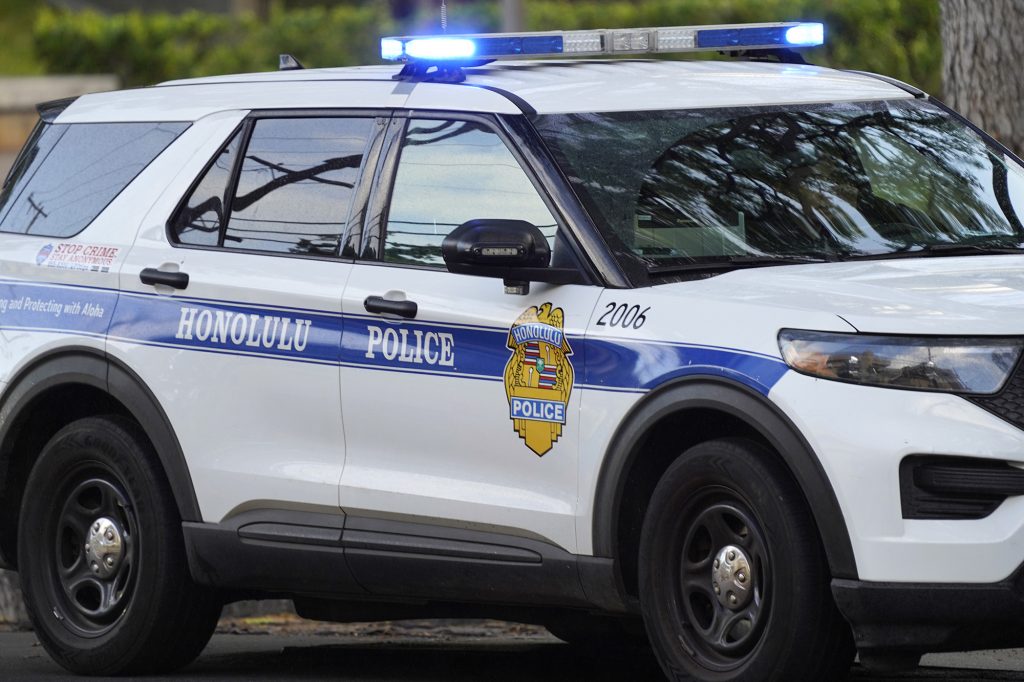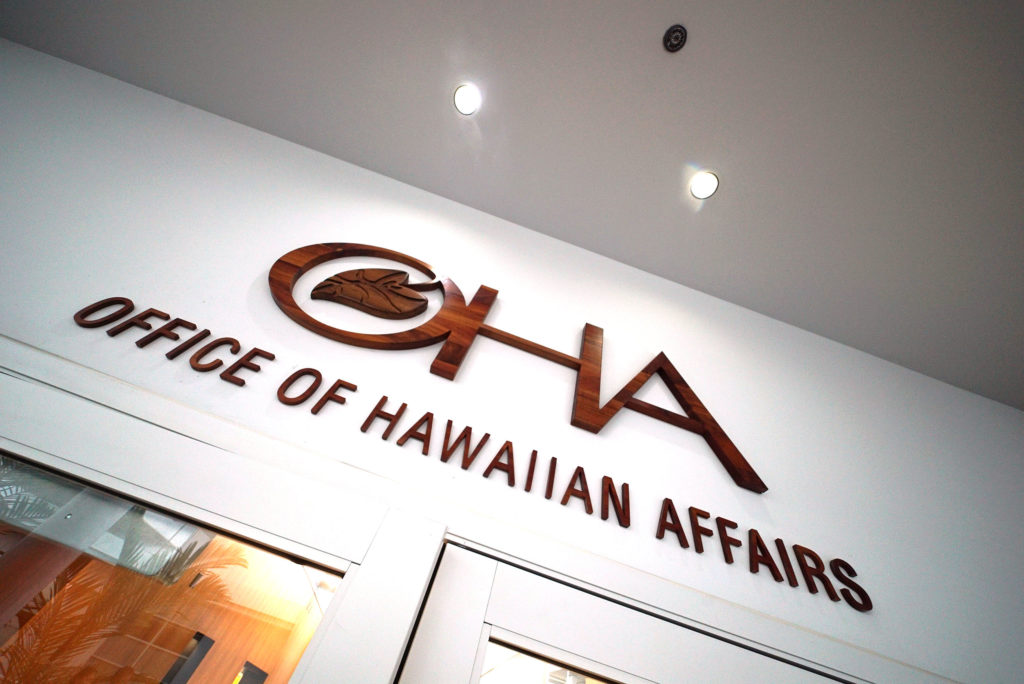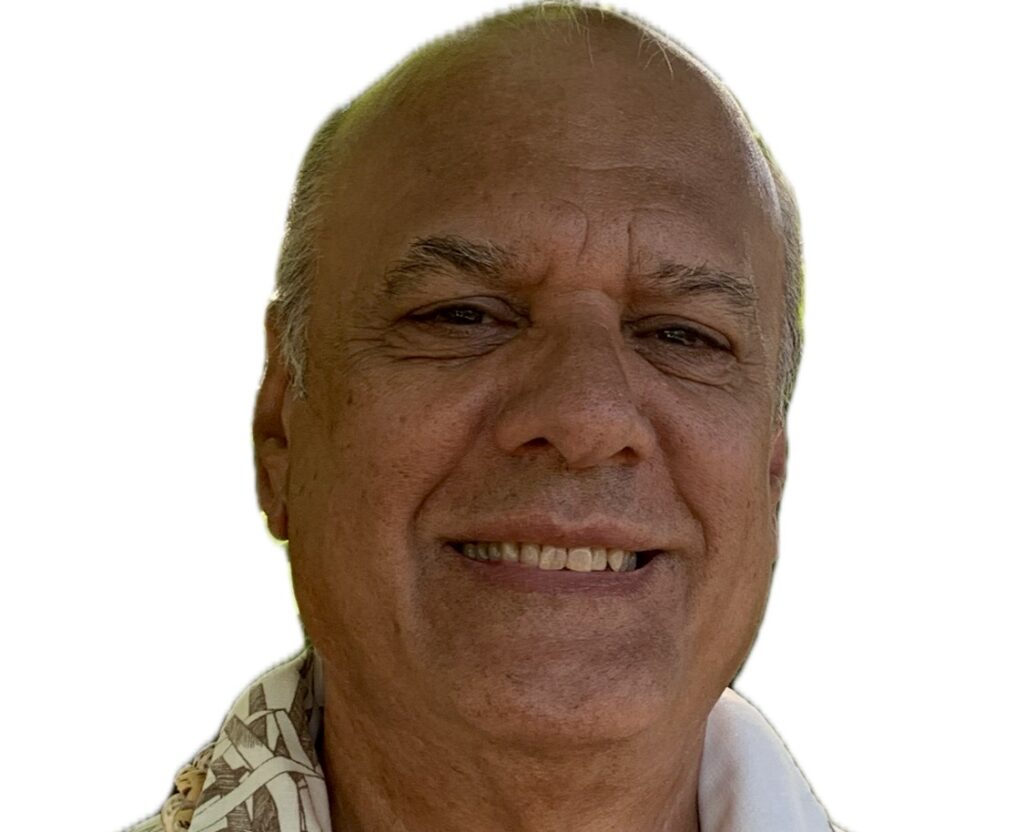Candidate Q&A: Hawaii County Mayor — Mitch Roth
"The largest problem facing the county that we have absolute control over is the years of deferred maintenance that have left our residents with aging and dilapidated infrastructure."
“The largest problem facing the county that we have absolute control over is the years of deferred maintenance that have left our residents with aging and dilapidated infrastructure.”
Editor’s note: For Hawaii’s Aug. 10 Primary Election, Civil Beat asked candidates to answer some questions about where they stand on various issues and what their priorities will be if elected.
The following came from Mitch Roth, candidate for Hawaii County mayor. His opponents are Kimo Alameda, Daniel Cunningham, Kavin Kahikina, Yumi Kawano, Breeani Kobayashi and Seaula Tupai Jr.
Go to Civil Beat’s Election Guide for general information, and check out other candidates on the Primary Election Ballot.
Candidate for Hawaii County Mayor
Website
Community organizations/prior offices held
1. What is the biggest issue facing Hawaii County, and what would you do about it?
Like the rest of the state and the country, our county faces a shortage of truly affordable housing and a rising cost of living. To address these challenges, we are investing millions of dollars into affordable housing projects and developing a pipeline that will eventually deliver over 8,100 affordable and workforce units to the market. Additionally, we are the first administration in over a decade to decrease real property taxes for affordable and residential homeowners.
That said, the largest problem facing the county that we have absolute control over is the years of deferred maintenance that have left our residents with aging and dilapidated infrastructure. To address this, we have made significant strides in infrastructure investment.
We released a request for proposal (RFP) to fully overhaul the Hilo Wastewater Treatment Plant. This will be the largest public works project in our county’s history.
We have paved over 70 miles of county roadways since 2020, and we plan to near 100 miles by the end of FY 24-25, improving road safety and accessibility.
We more than doubled the previous administration’s Capital Improvement Project (CIP) budget to over $247 million.
These accomplishments reflect our commitment to addressing deferred maintenance and investing in improving the quality of life for our residents.
2. Overtourism can degrade the environment, threaten biodiversity, contribute to wear and tear on infrastructure, generate traffic and disrupt neighborhoods. What do you think about the amount of tourism on the Big Island and how it’s managed?
While tourism has the potential to be transactional in nature, we have been fortunate to collaborate with our partners in the state, the Island of Hawaii Visitors Bureau (IHVB), and various nonprofit organizations to encourage responsible visits to our island home.
Some of the initiatives that the county has had the honor of partnering in include the Pono Pledge, which encourages visitors and residents alike to be mindful and respectful of our natural and cultural resources. The Pono Pledge, which has garnered significant viewership online and through various media channels, is also promoted on incoming flights to Hawaii island, ensuring that visitors are aware of their responsibilities to our aina (land) and culture before they even set foot on our shores.
Recently, the County of Hawaii, in partnership with the Hawaii Tourism Authority (HTA) and IHVB, announced two new community-based destination management initiatives — the Keaukaha Steward Pilot Program and the Community Cultural-Based Education Program. These initiatives are part of a concerted effort to mitigate tourism’s visitor impacts and protect natural and cultural resources in the Keaukaha area.
We also recognize the importance of sustainable tourism and are actively working to ensure that tourism benefits all facets of our community.
3. What needs to happen to relieve traffic congestion in and around Kailua-Kona and along the Puna-Keaau-Hilo corridor?
Traffic congestion in growing communities like Puna and Kailua-Kona remains a significant challenge for our county, impacting the quality of life for our residents.
In Kona, we have implemented several key initiatives to address this issue.
The Department of Public Works has selected Okahara and Associates to conduct the engineering and environmental assessment for the long-awaited Lako Street extension. Within a year, we expect to have another designed mauka-makai connector that will be shovel-ready when funds become available.
Although the widening of Kuakini Highway from Lako Street to Kamehameha III Road has yet to commence on the state side, we are prepared to move forward with the section of Alii Highway from Royal Poinciana through Lako Street to Laaloa Avenue. This will provide much-needed traffic relief for the residents of Alii Kai, especially during school hours.
In Puna, we have secured funding for a comprehensive study to explore alternate routes and improve connectivity. The County Council has provided $2 million for the Department of Public Works to complete the Puna Alternate Routes Study.
These efforts reflect our commitment to alleviating traffic congestion and improving infrastructure in both Puna and Kailua-Kona, ensuring a better quality of life for our residents and preparing our communities for future growth.
4. The cost of living on Hawaii island is rising rapidly. How are working and middle-class people expected to buy a house or pay the rent as well as take care of other expenses? And how can the county government help?
Our administration’s approach to addressing the housing and cost-of-living issues faced by our residents has been straightforward: create inventory and ensure our two largest sectors — the construction and hospitality industries — are thriving.
This strategy has enabled our county to emerge from Covid as the only county in the state to decrease our ALICE (Asset Limited, Income Constrained, Employed) or working poor populations, according to the Aloha United Way ALICE report published in 2022. We achieved this by ensuring that our hotels and restaurants could remain open during the pandemic through a special events protocol application that required additional safety measures. This protocol was reviewed by our County Civil Defense Administration and approved by our office.
We also worked diligently to transform our building permitting process from the worst in the country to the best in the state, as reported by the University of Hawaii Economic Research Organization. When we took office, the average wait time for a single-family residential home permit was over 200 days. We reduced that number to as low as 27 days at its best, and we continue to refine the process because we know that building homes means quality jobs and increased housing inventory for our residents.
5. Do you support the construction of the Thirty Meter Telescope on Mauna Kea?
As mayor of Hawaii County, I am a steadfast supporter of the Thirty Meter Telescope (TMT) and the broader field of astronomy on Mauna Kea. However, it is important to note that the decision to build TMT does not fall under the mayor’s discretion. The future of this project, and others like it, truly lies within community buy-in, which remains an open question at this time.
The newly formed Mauna Kea Stewardship and Oversight Authority, created by our legislature, represents a pivotal step toward bridging the gap between culture and science. Our administration is hopeful that this entity will foster meaningful community conversations related to the buy-in for TMT and future projects, ensuring that the voices of all stakeholders, particularly our Native Hawaiian community, are heard and respected.
We believe that the telescopes on Mauna Kea offer immense opportunities for our keiki to pursue careers in various engineering fields, providing a pathway for them to return home and secure quality jobs.
That said, we recognize and value that Mauna Kea holds a special place in the hearts of Hawaiians, who have a rich tradition of voyaging and celestial navigation.
We believe that with careful stewardship and a balanced approach, Mauna Kea can continue to be a beacon of astronomical discovery and cultural pride.
6. Homelessness remains a problem statewide, including on Hawaii island. What would you do to come to grips with this persistent problem?
Addressing homelessness in Hawaii County has been one of our administration’s top priorities, and we are proud to share some of the successes we have achieved and our ongoing efforts to tackle this issue head on.
Firstly, our recent point-in-time homeless count showed a decline in the number of individuals experiencing homelessness in our community. This positive trend reflects the impact of our comprehensive and compassionate approach. We have increased funding for homelessness programs, expanded access to emergency shelters and enhanced support services to help individuals and families transition from homelessness to stable housing.
One of our notable successes is the current development of the Kukuiola Emergency Shelter and Assessment Center. The facility, when finished, will provide immediate shelter and essential services, including case management, mental health support and substance abuse treatment. By addressing the root causes of homelessness, we will be able to offer a pathway to permanent housing and stability.
We have also partnered with nonprofit organizations, state agencies, and private sector partners to implement Housing First initiatives. These programs prioritize providing permanent housing to individuals experiencing chronic homelessness, coupled with the necessary support services to ensure they can maintain their housing. This evidence-based approach has proven effective in reducing homelessness and improving the quality of life for participants.
7. Half of Hawaii’s cesspools are on the Big Island, some 49,300. Seepage from cesspools can make people sick, harm coral reefs and lead to a variety of ecological damage. By law, cesspools must be upgraded to septic systems by 2050. What can be done to help people who may not be able to afford the conversion?
Our administration has prioritized education as the first step in addressing the mandatory cesspool conversions on Hawaii island. We believe that by getting out into our communities early and clearly communicating the law’s expectations, we can provide our residents with the necessary time to plan and prepare for the conversion process.
The reality is that cesspool conversion is crucial to protecting our precious aina and its many resources. These conversions are necessary to prevent pollution and safeguard our water sources, ensuring a healthier environment for current and future generations.
However, leveraging county funds to cover the costs of these conversions would not be feasible nor fiscally responsible from an administrative standpoint. This is why we are committed to working closely with our federal partners to identify and secure grant opportunities that can help subsidize the costs for eligible families.
To further support our community, we will soon be releasing a comprehensive cesspool conversion plan. This plan will outline detailed steps, resources and support mechanisms available to our residents. It will also include information on potential funding sources, technical assistance and a timeline to help guide the community through the conversion process.
8. What is the first thing Hawaii County should do to get in front of climate change rather than just reacting to it?
Our administration has made significant strides toward positioning the County of Hawaii at the forefront of climate action. One of our first initiatives upon taking office was to commission the county’s first-ever Integrated Climate Action Plan (ICAP). This strategic roadmap identifies specific actions the County government can undertake, marking a crucial step in holding ourselves accountable for climate action. The ICAP outlines key measures that will help the county achieve its vision and goals, aligning with existing state and county priorities.
In line with the ICAP, we issued a request for information (RFI) to gather insights from the community and innovators on climate change solutions, particularly focusing on achieving a net-zero emission economy through hydrogen and renewable energy and promoting sustainable infrastructure development. This was followed by a supplemental request specifically related to sustainable infrastructure.
We have also begun overhauling our county fleet to renewable energy vehicles, starting with our Hele-On bus service. We have acquired six all-electric buses and a fully operational hydrogen bus. Moving forward, we will continue transitioning county vehicles and other apparatuses to renewable energy where feasible and practical.
Additionally, we are in the process of updating the General Plan, which will take a comprehensive look at shoreline setbacks and other community planning issues related to sea level rise and climate change.
9. Should the Hu Honua biomass energy plant be allowed to start operating? Why or why not?
While our administration fully supports the transition to clean energy, the decision regarding the future of the Hu Honua plant does not fall within the jurisdiction of the County of Hawaii. The ultimate determination rests with the State’s Public Utilities Commission (PUC).
We will respect whatever decision the PUC makes, recognizing that the plant has the potential to generate quality jobs and provide alternative energy sources to our grid. However, we also acknowledge the concerns raised by neighboring communities regarding the sustainability of the plant’s fuel source and the potential unintended impacts that may not be known at this time.
Our role is to ensure that all voices are heard and to advocate for solutions that balance economic growth with environmental sustainability and community well-being.
We are committed to working with state officials, stakeholders and our residents to support clean energy initiatives that are both effective and sustainable and to address any concerns that arise.
Ultimately, our goal is to foster a resilient and sustainable energy future for Hawaiʻi Island, one that benefits our environment, economy and community.
10. How would you make the county administration more transparent and accessible to the public?
Since taking office, we have strived to be honest, accountable and fair in all we do. We have hosted numerous town hall and community talk story sessions around the island, bringing our department heads and subject matter experts to meet with individual communities to discuss concerns and provide updates. We have responded directly to thousands of inquiries to our office via phone and email.
In times of disasters and other critical incidents, we have held press conferences and briefings to keep our community informed. We have engaged with the media on all matters, not just those favorable to our administration, ensuring transparency and open communication. Additionally, we have created community advisory groups to tackle place-based issues and have met with thousands of constituents who have requested private meetings.
Moving forward, we will continue to be an administration that listens, informs and makes decisions based on the needs and input of our community. Our goal is to foster an environment of trust and collaboration, ensuring that every resident feels heard and valued. We hope to further enhance our engagement efforts by leveraging technology to reach more residents, expanding our outreach programs and continuing to hold ourselves accountable to the highest standards of public service.
 Sign up for our FREE morning newsletter and face each day more informed.
Sign up for our FREE morning newsletter and face each day more informed.
Only 1% of readers are donors to Civil Beat
More than 600,000 people read Civil Beat articles every month, but only 7,000 of those readers also donate to support the news they count on. That’s only 1% of readers!
If you are among the 99% of Civil Beat readers who haven’t made a donation before in support of our independent local journalism, you can change that today. A small donation makes a big impact.










